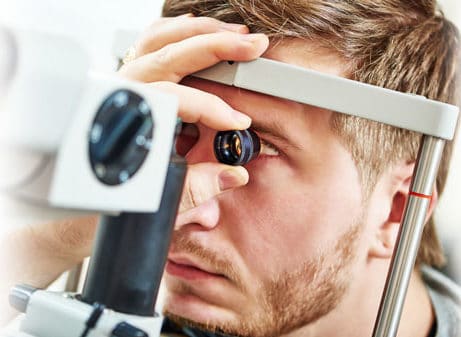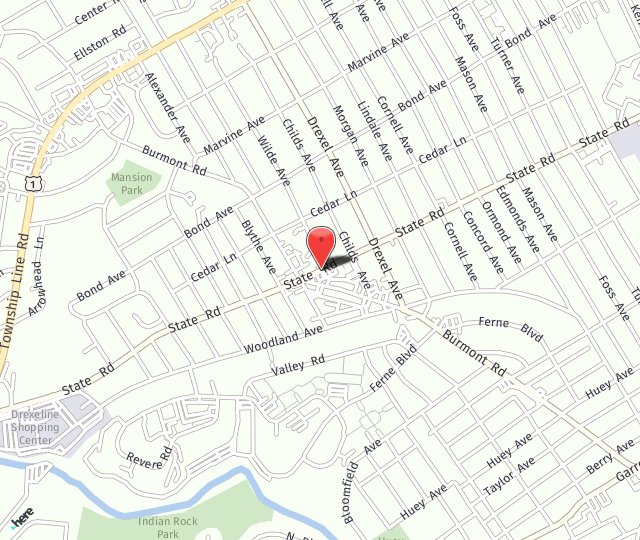Dr. Bedrossian offers a variety of options to test for and relieve excessive pressure in the eye, including medical prescriptions, laser treatment, and conventional surgery.
What Is Glaucoma?
Glaucoma is an irreversible condition that damages your eye’s optic nerve (the nerve that allows us to see).

Glaucoma Causes
It usually happens when fluid builds up in the front part of your eye. That extra fluid increases the pressure in your eye, damaging the optic nerve. Glaucoma is a leading cause of blindness for people over 60 years old. But blindness from glaucoma can often be prevented with early treatment
Types Of Glaucoma
There are two major types of glaucoma:
Primary Open-Angle Glaucoma
This is the most common type of glaucoma. It happens gradually, when the eye does not drain fluid as well as it should (like a clogged drain). As a result, eye pressure builds and starts to damage the optic nerve. This type of glaucoma is painless and causes no noticeable decrease in vision at first.
Some people have optic nerves that are sensitive to normal eye pressure and therefore have a higher risk of getting glaucoma. Regular eye exams are important to find early signs of damage to their optic nerve.
Angle-Closure Glaucoma (Also Called “Closed-Angle Glaucoma” Or “Narrow-Angle Glaucoma”)
This less common type of glaucoma happens when the iris (colored part) is very close to the drainage angle in their eye, blocking the outflow of fluid. like a piece of paper sliding over a sink drain. When the drainage angle gets completely blocked, eye pressure rises very quickly. This is called an acute attack. It is a true eye emergency, and you should call Dr. Bedrossian right away or you might go blind.
The signs of an acute angle-closure glaucoma attack are:
- vision is suddenly blurry
- severe eye pain
- headache
- feel sick to your stomach (nausea)
- throw up (vomit)
- rainbow-colored rings or halos around lights
Many people with angle-closure glaucoma develop it slowly. This is called chronic angle-closure glaucoma. There are no symptoms at first, so they don’t know they have it until the damage is severe or they have an attack.
Treatment For Glaucoma
To treat glaucoma, Dr. Bedrossian will use one or more of the following treatments:
Medication
Glaucoma is usually controlled with eyedrop medicine. Used every day, these eye drops lower the pressure in the eye. Some do this by reducing the amount of fluid the eye makes. Others reduce pressure by increasing outflow of fluid through the drainage angle.
Glaucoma medications may produce side effects such as:
- a stinging or itching sensation
- red eyes or red skin around the eyes
- changes in your pulse and heartbeat
- changes in your energy level
- changes in breathing (especially if you have asthma or breathing problems)
- dry mouth
- blurred vision
- eyelash growth
- changes in your eye color, the skin around your eyes or eyelid appearance.
Never change or stop taking your glaucoma medications without talking to Dr Bedrossian. If you are about to run out of your medication, ask for prescription refills
Laser Surgery
There are two main types of laser surgery to treat glaucoma. They both help fluid drainage from the eye. These procedures are usually done in Dr. Bedrossian’s office or an outpatient surgery center.
Trabeculoplasty - This surgery is for people who have open-angle glaucoma. Dr. Bedrossian uses a laser to make the drainage angle work better. That way fluid flows out properly and eye pressure is reduced.
Iridotomy - This surgery is for people who have angle-closure glaucoma. Dr. Bedrossian uses a laser to create a tiny hole in the iris. This hole helps fluid flow to the drainage angle.
Operating Room Surgery
Some glaucoma surgery is done in an operating room. It creates a new drainage channel for the aqueous humor to leave the eye.
Trabeculectomy. This is where Dr Bedrossian creates a tiny flap in the sclera (white of your eye) and also creates a bubble (like a pocket) in the conjunctiva called a filtration bleb. It is usually hidden under the upper eyelid and cannot be seen. Fluid from inside the eye will be able to drain out of the eye through the flap and into the bleb. In the bleb, the fluid is absorbed by tissue around your eye, lowering eye pressure.
Glaucoma drainage devices. A tiny drainage tube may be implanted in your eye. It sends the fluid to a collection area (called a reservoir), beneath the conjunctiva (the thin membrane that covers the inside of your eyelids and white part of your eye). The fluid is then absorbed into nearby blood vessels.
What Happens If I Don't Treat Glaucoma? (Risks Of Glaucoma)What Happens If I Don't Treat Glaucoma? (Risks Of Glaucoma)
If glaucoma is untreated the damage to the eye could be permanent. Glaucoma can cause loss of vision that cannot be reversed.
Schedule A Consultation
To learn more about ear lobe repair contact us to schedule an appointment.

